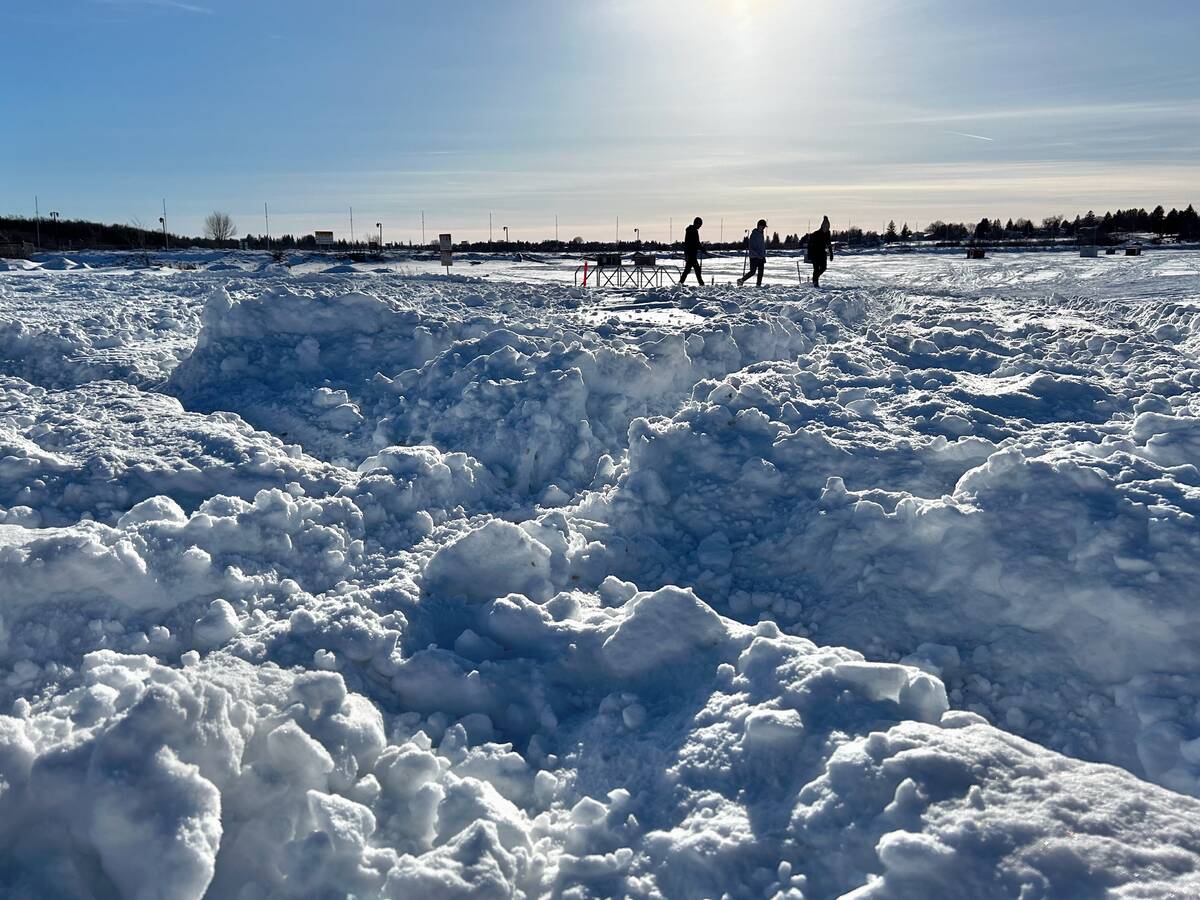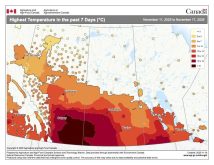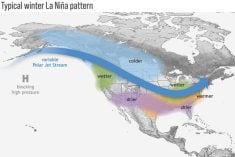Someone special asked if I could talk about rainbows and other optical weather-related phenomena, which are some of the most captivating displays in nature.
These events are created by the interaction of sunlight with water droplets, ice crystals and atmospheric particles. Let’s look into the science behind the formation of rainbows and explore other optical wonders, and shed some light on the beauty and complexity of Earth’s atmosphere.
Of all the different atmospheric optical phenomena, rainbows are perhaps the most well-known. Rainbows are created when sunlight interacts with raindrops in the atmosphere.
Read Also

Predicting Manitoba winter snowfall
How much snow should farmers in Manitoba expect for the rest of December 2025 and into January-February 2026? Here’s what the weather models say about the winter to come.
To see a rainbow, you need sunlight coming from behind you and a low sun angle. The ideal angle is about 42 degrees. This is why most rainbows are seen in the morning, late afternoon or evening.
When sunlight enters a raindrop, it slows down and bends as it passes from the air (a less dense medium) into the denser water droplet. This bending is called refraction. As the light continues to travel through the raindrop, it is spread into its individual colours. This occurs because different colours of light bend by varying amounts when passing through the raindrop, due to their differing wavelengths.
The dispersed light undergoes internal reflection inside the raindrop, bouncing off the inner surface of the droplet. After the internal reflection, the light exits the raindrop, bending once more as it transitions into less dense air.
The result of this intricate process is separation of sunlight, forming a circular arc of different colours ranging from red on the outer edge to violet on the inner edge — the classic rainbow we all know and love.
It probably sounds more complicated than you thought. Remember, light travels very fast (300,000 km/s) so this all happens nearly instantaneously over hundreds of thousands of raindrops.
While the classic rainbow is the most common, other types can occur under specific conditions. My favourite is the double rainbow, which consists of two concentric arcs: the primary rainbow on the outside and secondary rainbow on the inside.
It forms due to two internal reflections inside the raindrop. During the second internal reflection, the light exits the raindrop at a steeper angle, resulting in a more widely spaced set of colours. As a result, the secondary rainbow appears as a fainter, wider arc with its colours reversed compared to the primary rainbow — red on the inner edge and violet on the outer edge.
The next type is a supernumerary rainbow, a close relative of the double rainbow. Supernumerary rainbows are faint, closely spaced and pastel-coloured arcs that sometimes appear on the inner edge of the primary rainbow. They result from the interference of light waves as they interact within the thin layers of water droplets in a rain shower.
The light waves reflect off the droplet’s inner surface, then combine as they exit the droplet. This leads to constructive and destructive interference patterns, resulting in the alternating bright and dark bands of colours that characterize supernumerary rainbows.
Think of waves bouncing off a pier. Some cancel each other and others build on each other, resulting in a bigger wave.
Next is the lunar rainbow, sometimes known as moonbows. These occur when moonlight instead of sunlight is refracted and dispersed by raindrops. Moonbows are much dimmer than their daytime counterparts and often appear white or pale since the moon only reflects about 14 per cent of the sunlight that hits it.
Last on the list of rainbows is the fogbow. These are like rainbows but are formed by diffraction of light through tiny water droplets in fog or mist. They lack the vibrant colours of regular rainbows and often appear as white or grayish arcs. This is due in part to the weakness of the sunlight as it often passes through a large amount of mist or fog.
It is usually white or grayish due to the interference of all the tiny water droplets between you and the primary refracting droplets.
As we head toward winter, we lose the rainbow but gain four different atmospheric phenomena as water droplets turn into ice crystals. The first are halos — luminous rings or arcs that encircle the sun or moon. They are caused by the refraction, reflection and dispersion of light through ice crystals in the atmosphere.
Halos often appear as brilliant circles or arcs of light and are sometimes accompanied by colourful spots or pillars.
Sun dogs, the bright spots we sometimes see on either side of the sun, often accompany halos. They are caused by the refraction of sunlight through ice crystals and are often seen when cirrus clouds are present.
The third type of atmospheric phenomena are sun pillars — vertical columns of light that extend above or below the sun. They are created when ice crystals reflect sunlight in a way that forms a luminous pillar. These can be seen during sunrise or sunset.
The fourth phenomenon is called light pillars. These can occur around natural light sources, but more often appear around artificial light sources, such as streetlights, when ice crystals in the air reflect the light vertically.
Keep the questions coming. You can email me at [email protected].
















